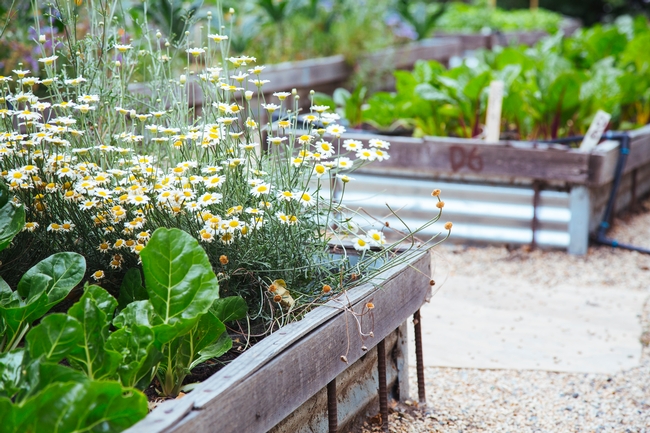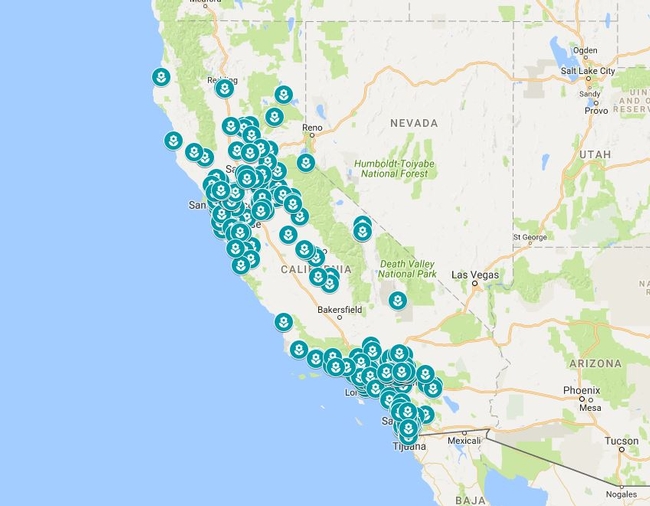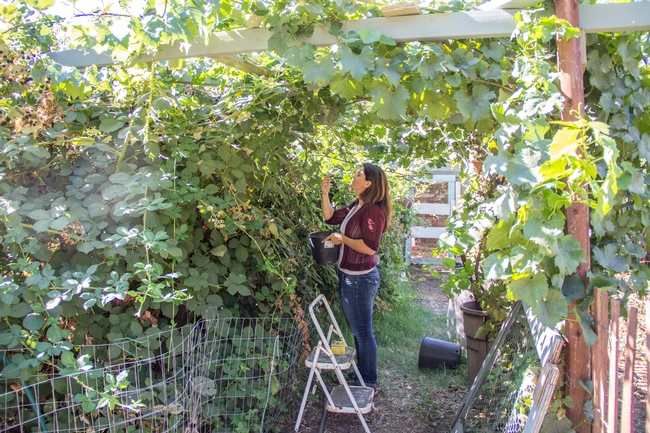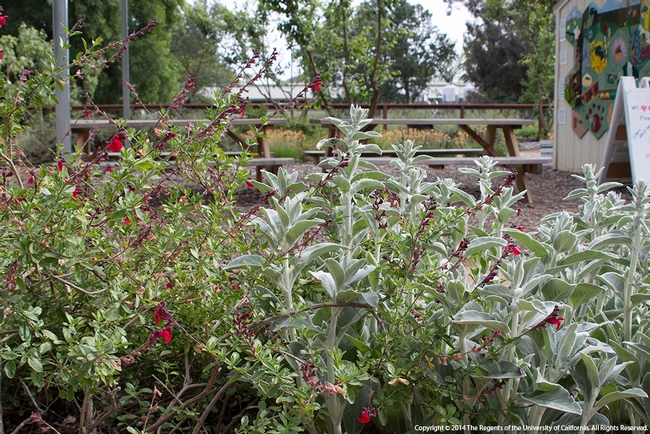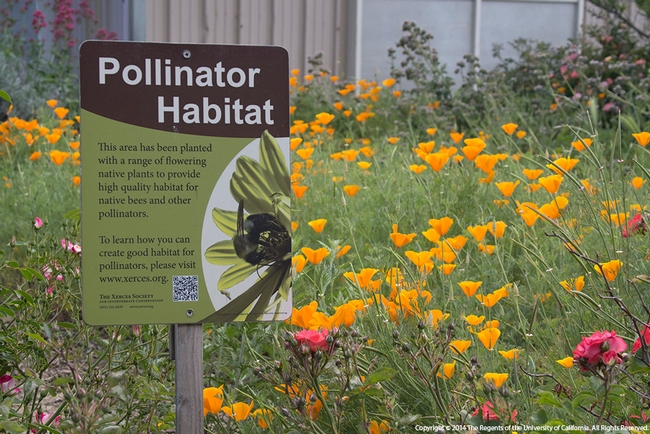Posts Tagged: gardening
How to Attract Pollinators to Your Garden
It's a great topic. Horticulture experts at the UC Davis Arboretum and Public Garden will join forces with the Yolo County Master Gardeners on...
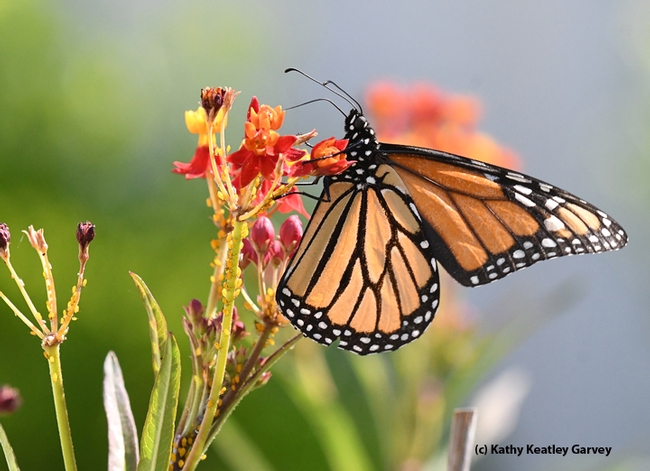
A monarch sips nectar from a tropical milkweed. (Photo by Kathy Keatley Garvey)
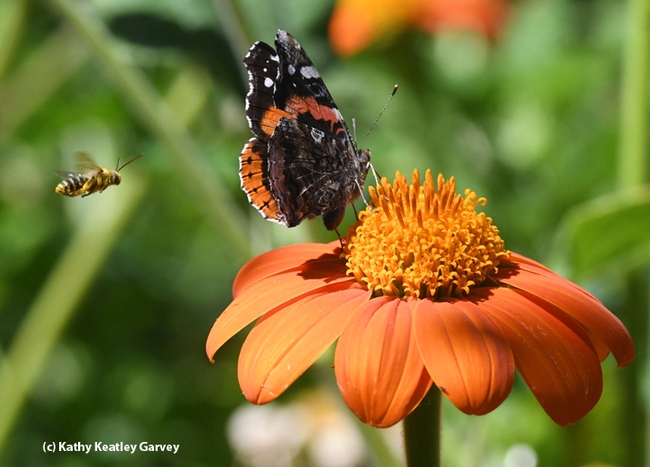
A male territorial long-horned bee targets a red admiral buttefly sipping nectar from a Mexican sunfower, Tithonia. (Photo by Kathy Keatley Garvey)
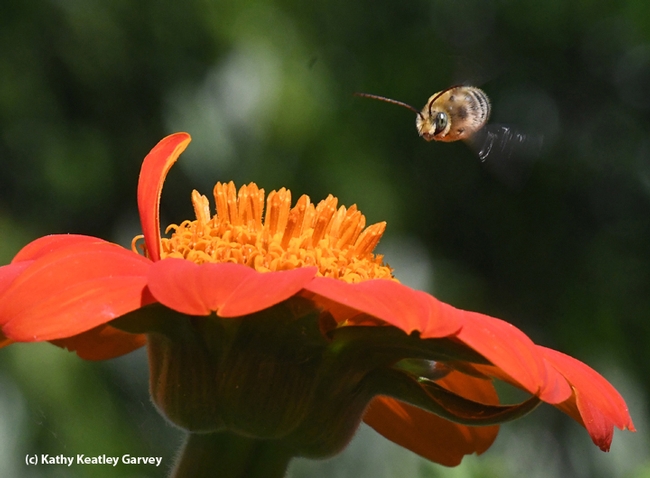
A male long-horned bee buzzes across a Mexican sunflower, Tithonia. (Photo by Kathy Keatley Garvey)
Visit a UC Master Gardener demonstration garden, learn and be inspired
Birds are chirping, the sun is shining and flowers are in bloom – it is time to get out into a garden and enjoy nature's beauty. UC Master Gardeners have been working hard to bring demonstration and community gardens to life across California, and volunteers are eager to teach how you can create sustainable splendor in your own landscape.
The UC Master Gardener Program is in your community
Be inspired. Visit a garden that has the power of the University of California and the UC Master Gardener Program behind it. With thousands of volunteers, hundreds of demonstration, school and community gardens across California and programs in 50 counties plus Lake Tahoe basin it is easy to discover the joy of gardening in your community.
Hit the road and get excited about gardening
UC Master Gardener demonstration gardens showcase best practices for garden management from plant selection to ground covers and irrigation. Demonstration gardens can appeal to everyone as they often include multiple themes like bumble bees, growing veggies, historical roses and low water–use plants.
Things you can discover in a demonstration or community garden:
- Mediterranean or native plants
- Roses
- Ornamental grasses
- Succulents
- Orchard trees and vegetables
- Pollinator habitats
- Composting
- Irrigation methods
- Mulch
Whatever your interest, you'll be sure to take something away from your visit to one of the many gardens across California. Find a location by visiting the UC Master Gardener Program garden map: http://bit.ly/2qqWRM4.
“When on a road trip I love to stop, stretch my legs and walk around a garden in a new town or city. It gives me an opportunity see new and unique plants that grow in different areas, plus I have the opportunity to recharge,” says UC Master Gardener volunteer Lauren Hull. “Recently, I was driving to Lake Tahoe and made a point to stop and visit the Sherwood Demonstration Garden, it was the perfect break during the long drive!”
UC Master Gardener classes share science-based gardening practices
For more direct educational opportunities, attend a gardening workshop hosted by local UC Master Gardener Program. Workshops are free or very low cost and cover a vast array of gardening topics. To find a UC Master Gardener event in your area, visit: mg.ucanr.edu/Events.
As you plan your summer travel, consider attending a workshop or event where you are vacationing. The UC Master Gardeners of Orange County are teaching the power of perennials on May 20, UC Master Gardeners of Santa Barbara County will present at the Santa Ynez Valley Earth Day celebration May 21, the UC Master Gardeners of Tuolumne County will have a Kids' Day in the Garden on June 3 … and so many more events to choose from!
“Attendees at workshops, classes and on demonstration garden tours can expect to hear from gardening experts in their local community. UC Master Gardener volunteers have been trained by UC scientists to become a 'master' in the garden and are proud to share their expertise and knowledge with an inexperienced gardener or an industry professional,” said Missy Gable, UC Master Gardener Program director.
Take ideas home
Whether your landscape needs a total overhaul, a few new plants or nothing at all, the knowledge and new ideas gained from workshops and demonstrations gardens is inspiring. Invite bees, butterflies and hummingbirds into your life by adding pollinator friendly plants to an existing landscape. Become more water-wise by adding mulch, changing out sprinkler heads and replacing high water user plants. Continue growing as a gardener by staying connected with your local UC Master Gardener Program, and stopping at demonstration gardens throughout the state.
The UC Master Gardener Program extends to the public free UC research-based information about home horticulture and pest management. In exchange for the training and materials received from the University of California, UC Master Gardeners perform volunteer services in a myriad of venues. If you are interested in becoming a certified UC Master Gardener contact your local UC Cooperative Extension office.
A Big Butterfly-and-Bee Day at the Bohart
It was a big butterfly-and-bee day at the Bohart. Despite other major attractions--including the gorgeous spring day and the March Madness...
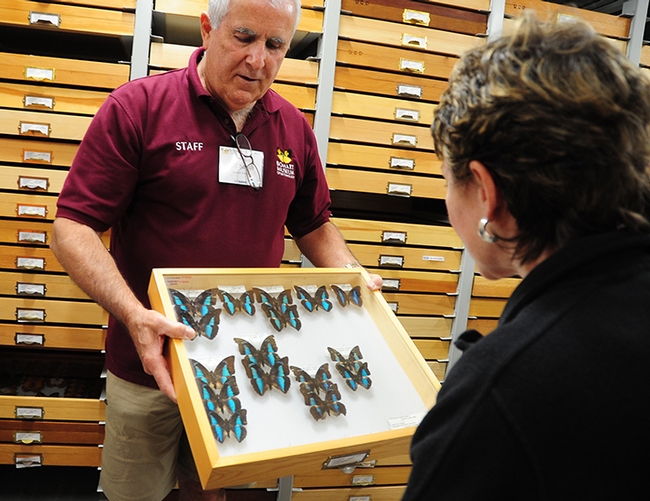
Entomologist Jeff Smith, who curates the butterfly and moth display at the Bohart, shows South American rainforest butterflies, Preponas, in the genus Archaeoprepona to butterfly-bee enthusiast Ria deGrassi of Davis. (Photos by Kathy Keatley Garvey)
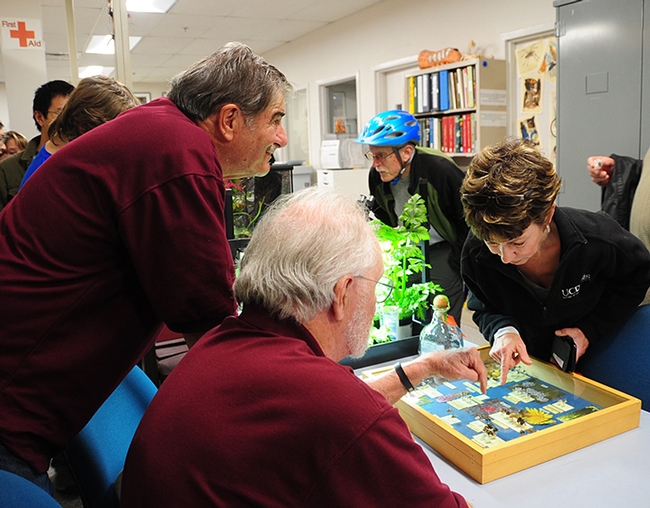
Davis resident Ria deGrassi talks about finding an unusual bee in her yard. At left are Robbin Thorp (foreground), UC Davis distinguished emeritus professor of entomology, and Bohart associate Greg Kareofelas (next to him).
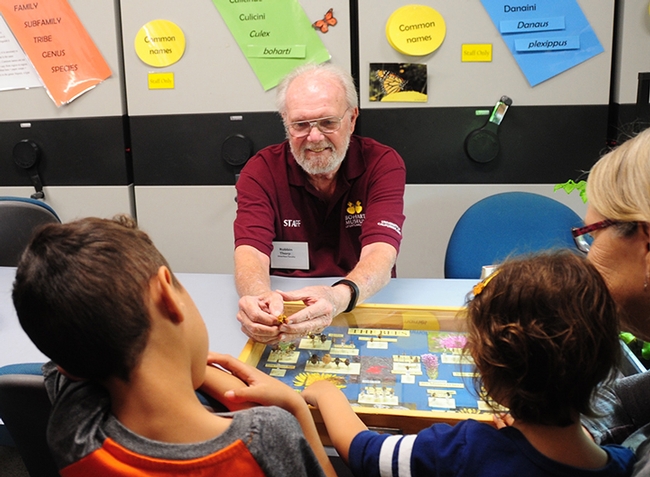
Robbin Thorp, UC Davis distinguished emeritus professor of entomology, displays a male Valley carpenter bee, aka "teddy bear." He assured visitors: "Boy bees can't sting."
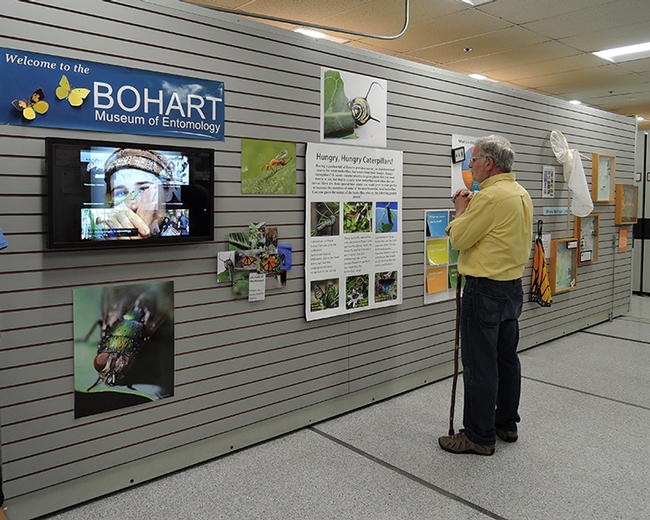
A visitor stops to read a poster at the close of the Bohart Museum open house.
Gardening for Butterflies
She's only 11 years old, but already she's interested in butterflies. Selah Deuz of the Sherwood Forest 4-H Club, Vallejo, entered her display on...
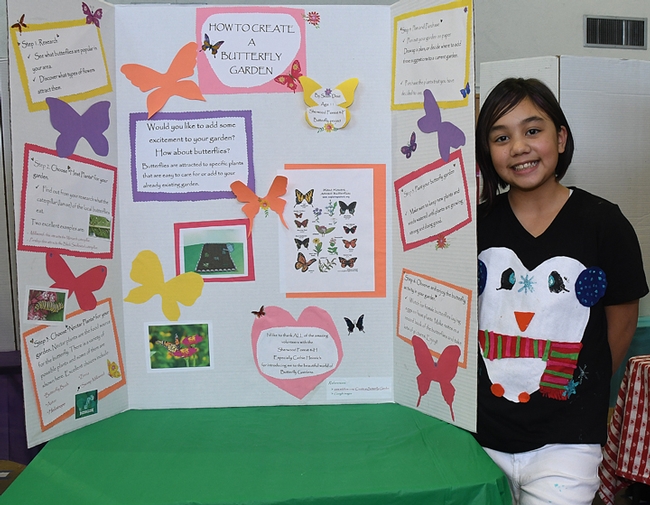
Selah Deuz of the Sherwood Forest 4-H Club, Vallejo, stands by her butterfly display board at the Solano County 4-H Project Skills Day. (Photo by Kathy Keatley Garvey)
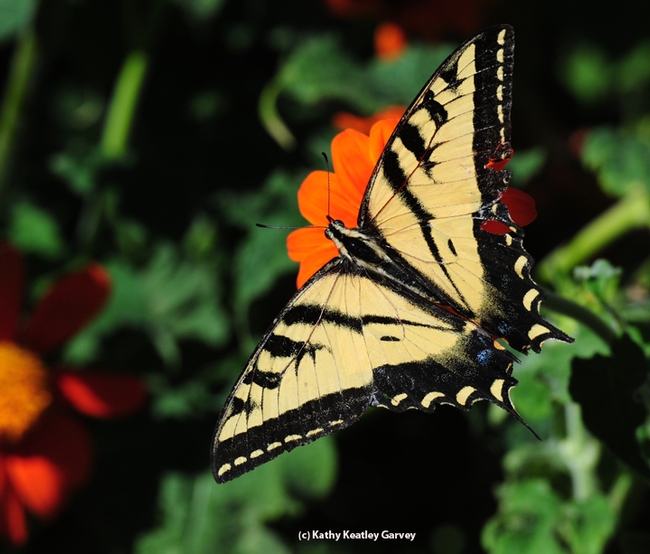
A Western tiger swallowtail, Papilio rutulus, nectaring on Mexican sunflower (Tithonia). (Photo by Kathy Keatley Garvey)
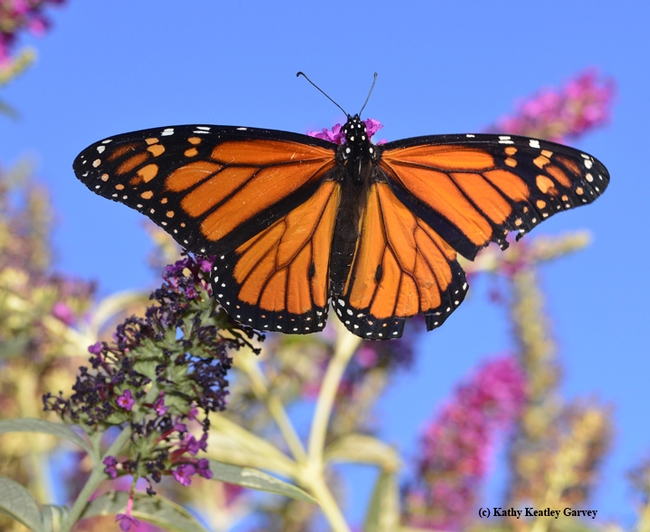
A male monarch, Danaus plexippus, foraging on a butterfly bush, Buddleja. (Photo by Kathy Keatley Garvey)
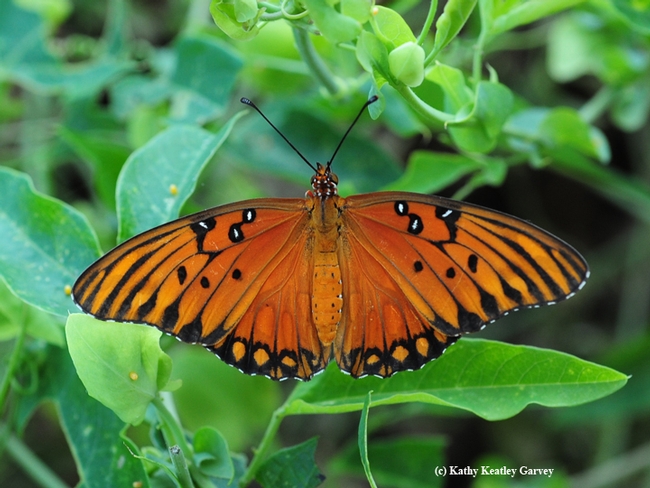
A Gulf Fritillary, Agraulis vanillae, stops to rest. (Photo by Kathy Keatley Garvey)
Twelve rules of thumb for creating a bee-friendly home landscape this fall
“Fall, with its cooler temperatures, shorter days, and imminent rainfall, is the best time to plant a bee garden in California. Much of the plants' growth at this time will be in the roots rather than the vegetative growth, and that gives new plants an advantage when temperatures warm up and the soil dries in the spring. Fall and winter are usually the wet seasons in California, and a bee garden will benefit from the natural pattern of rainfall that helps plants get established,” according to California Bee-Friendly Garden Recipes (Pawelek et al. 2015)
With fall being the perfect time for planting consider making your home landscape bee-friendly and follow UC Agriculture and Natural Resources' California Bee-Friendly Garden Recipes - 12 rules of thumb for creating a bee-friendly home landscape:
- Learn the seasonality of plants and bees.
Bees need both pollen and nectar resources from plants all year long. Sugary nectar provides energy for adult bees, and protein-rich pollen is used to feed their young. Plant not only a variety of plants (to ensure both pollen and nectar resources) but also make sure that they bloom at different times throughout the year, with the most active times of bees in garden running from February to October. - Provide a diversity of floral hosts.
A large variety of plants in a garden attracts a more diverse bee population. UC ANR researchers recommend planning a minimum of 20 different plant types to provide plenty of nectar and pollen sources for bees. If space or resources don't allow, consider plants that provide both nectar and pollen resources such as seaside daisy (Erigeron glaucus), blanketflower (Gaillardia x grandiflora), thyme (Thymus vulgaris), and coneflower (Echinacea purpurea). - Give structure to the garden.
When planning your garden arrange plants so it is easy to observe the bees that are visiting your landscape. Place taller plants or shrubs in the back and smaller or shorter plants in the front. Or you can plant in the shape of an island to allow viewing from all sides. - Plant in the sun.
Typically bees prefer flowers in the sunshine over the shade. Monitor the amount and location of sun in your home landscape and plant sun-loving bee-attractive plants in the sunniest section of your yard. - Plant shrubs, perennials and annuals in patches.
Most bees will visit one type or a few types of flowers each time they forage, an abundance of the same flower variety allows for more efficient foraging for bees. The California Bee-Friendly Garden Recipes publication recommends a 3.5 ft x 3.5 ft flower patch of the same variety. - Don't forget to seed annuals.
Plant seeds for spring blooming annuals and bulbs in the fall and take advantage of the winter rains and provide beautiful flowers in the spring. Great options include sunflowers (Helianthus annuus), Mexican sunflower (Tithonia diversifolia), California poppy (Eschscholzia californica), and zinnia (Zinnia elegans). - Maintain flowers.
Prolong a plant's blooming season by dead-heading. As soon as flowers begin to fade, wither and brown, pinch or cut-off the flower stem below the flower or right above the first set of healthy leaves. This allows the plant to continue to invest in producing more blooms and not seeds. - Create a watering regimen.
Regular watering of plants during blooming season allows plants to produce more flowers for a longer period of time. If a plant is water stressed it won't produce new flowers and nectar and pollen production declines. Consider plants that thrive in California's dry Mediterranean climate, UC Berkeley's Urban Bee Lab offers a list of the best bee plants with a large selection of California native options. - Do not use pesticides!
Applying pesticides to your home landscape can kill beneficial insects and bugs visiting your garden, including bees. Consider using integrated pest management practices that are natural or organic methods like hand-picking, spraying with water or natural insecticides. Contact your local UCCE Master Gardener Program to learn more about integrated pest management. - Consider plant climate zones.
Consider right plant, right place when selecting plants for your home landscape. Most gardening books, websites, plant labels and seed packets refer to a plants hardiness zone, climate zone or growing zone. Become familiar with the climate or microclimate in your area, the USDA Plant Hardiness Map and the Sunset Zone Map are a great starting guide for determining what plants will thrive in your garden space. - Provide homes for nesting bees.
A bee-friendly garden provides cover and a safe place for bees to raise young. Most bee habitats are either in the ground or in pre-existing cavities. Provide a nesting home for bees in your garden by leaving a small section of your landscape unmulched for ground-nesting bees. Nesting blocks, drilled holes in untreated wood or “bee-condos” can be offered to bees that prefer a pre-existing cavity habitat. - Provide nesting materials, including a water source.
Bees build their nests with mud, plant leaves and resins. Bees require a water source to not only drink but also to make mud for nest building. Fill a shallow water dish or birdbath to your garden, add small rocks or a floating cork for bees to rest and to prevent drowning.
Learn more with UC ANR and the UC Master Gardener Program
Interested in learning more about how to grow a buzzing bee-friendly garden? The UC Master Gardener Program has University trained volunteers who are eager to help. Volunteers are available to answer questions about preparing your soil, plant selection, pest management, and more. With local programs based in more than 50 counties across California and thousands of workshops a year there is sure to be an event or class near you. Visit our website to find your local UC Master Gardener Program, mg.ucanr.edu.
Resources:
Pawelek, Jaime C., Frankie, Gordon W., Frey, Kate, Leon Guerrero, Sara, and Schindler, Mary. 2015. “California Bee Friendly Garden Recipes.” ANR Publication 8518, http://anrcatalog.ucanr.edu/pdf/8518.pdf
Ponder, Marissa, Frankie, Gordon W., Elkins, Rachel, Frey, Kate, Coville, Rollin, Schindler, Mary, Pawelek, Jaime, and Shaffer, Carolyn. 2013. “How to Attract and Maintain Pollinators in your Garden.” ANR Publication 8518, http://anrcatalog.ucanr.edu/pdf/8498.pdf
UC Berkeley Urban Bee Lab, www.helpabee.org
Pollinator partnership, www.pollinator.org


